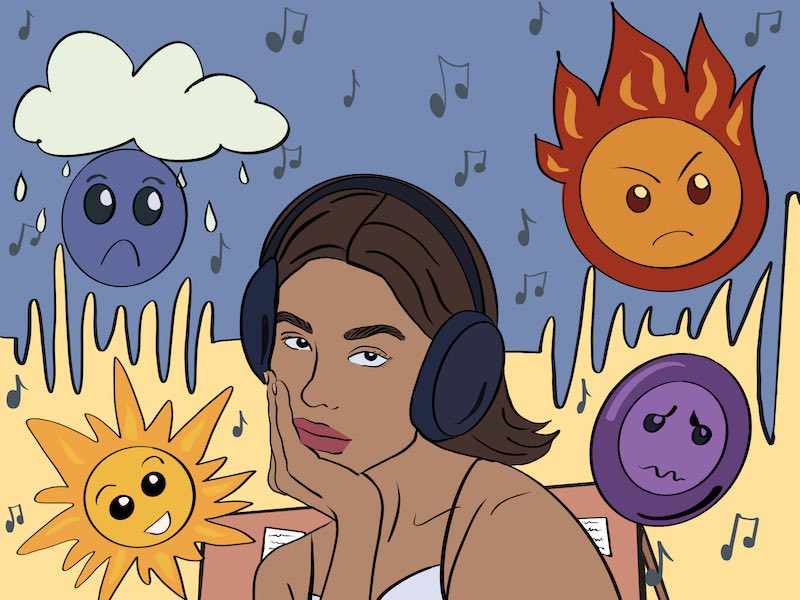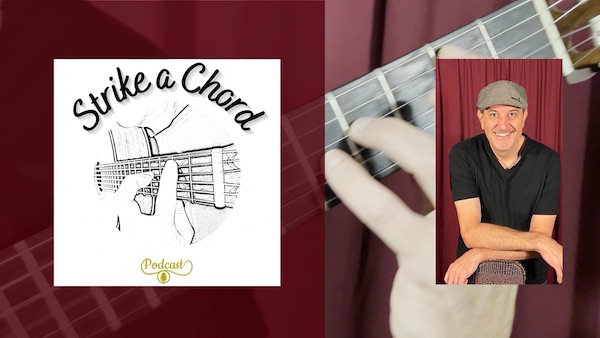At a young age, music stirred emotions within me that were initially confusing, leading to…

Guitar Mindfulness
Music Mindfulness in the Classroom
Music is a language that enables us to connect with the flow of existence, which in other words is simply being in the moment.
As musicians, our goal is to experience the pure pleasure of creating, performing, and listening to music.
How to Achieve this Guitar Mindfulness as a Performer
I suggest moving away from cognitive conscious thinking.
As a teacher and educator for the past 40 years, I’ve observed the consequences of overthinking for students.
Thinking can block out sound, leading thoughts to visually guide our playing instead of the sound in our heads.
A fine line separates enjoyment from suffering, which can lead to anxiety and depression. Play the sound in your mind, don’t just think—this is the essence of guitar mindfulness.
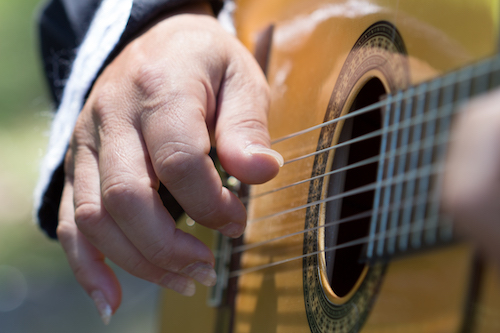
How do I Know if I am Actually Playing the Sound I Have in my Head
If you feel fine after playing non-stop for an hour in front of an audience, you’re doing it right. But if you feel bad, suffer stage anxiety, forget what to play, or get easily distracted, your thoughts are anticipating the creative sound process.
Skipping This Step? Why Missing Sound Imagination Hurts Your Guitar Progress
Yes, of course, we think, but thoughts merely guide us to physically express the sound we’re imagining. We must have the sound in mind, the aural concept, and then use thoughts to bring that sound alive.
Thoughts will guide how to play, in what key, with which chords, when, etc.
First, imagine the sound, then bring it to life through your chosen instrument, the guitar.
Do not overlook this step.
Skipping it leads to missing what you truly need to play, resulting in lack of progress, frustration, dissatisfaction, and anxiety.
Challenging Tradition: Rethinking European Music Training Methods
Traditional European music training is rooted in a 19th-century model that originated in French conservatories, designed to cultivate virtuosity and showmanship. This model subsequently spread to conservatories across Europe, resulting in the current unsatisfactory situation where students spend five years studying solfeggio, memorizing visual symbols rather than focusing on sound. Consequently, upon completing their studies, many students remain incapable of truly hearing and appreciating music.
If a guitar student has had the fortune of growing up in a musical environment where they learned to enjoy the experience of listening to music from childhood, the visual form of learning will have a positive impact. However, if you did not have the opportunity to experience music listening during childhood, especially within a musical family, then you must be taught to hear music in a manner similar to how a child would.
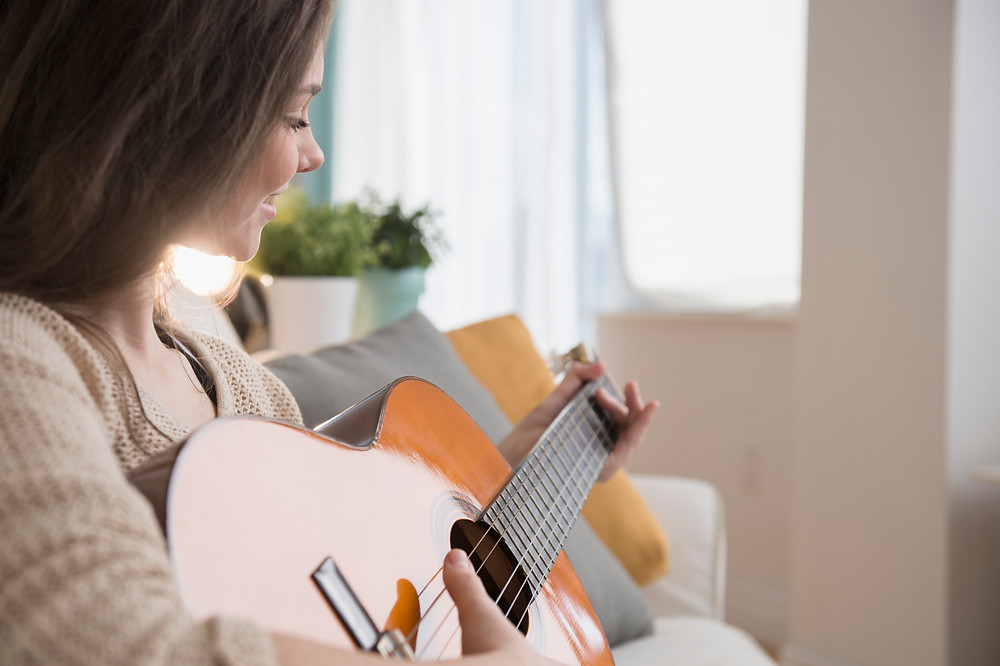
Aural Learning: Music Mindfulness
All of my online guitar courses and in-person guitar lessons teach students to initially develop the aural concept of a sound before translating it to the instrument. In other words, you’ll learn to hear and sing the sound with the correct rhythm before playing it.
Having a clear aural understanding of the melodic line empowers us to perform at the peak of our creative potential.
Moreover, building upon this learning approach of playing what you hear will aid in composing, allowing you to precisely capture the melody you intend to convey—an outcome of the emotion.
If you’re a songwriter interested in ensuring your recordings truly reflect your state of musical mindfulness, please follow this link.
Sensory Learning
Traditional learning often involves instructions like ‘Watch me, see what I’m doing,’ or ‘Look at my notes and play.’
This means you memorize visuals, hoping it leads to the right sound—similar to how YouTube learning works.
Instead, start by memorizing the sound, sing it, and then focus on the physical aspect. This approach is simpler and more fulfilling.
Music is More than a Sound
Music evokes emotions, and our goal is to recreate those emotions through our instruments. When we reproduce a sound, we’re also aiming to capture the emotion.
Hence, it’s even more effective to not just memorize the sound, but also connect it to an emotion. This approach fuels our desire to convey that emotion, driving us towards achieving perfection.
Recreating and embodying emotions is the ultimate result of guitar mindfulness
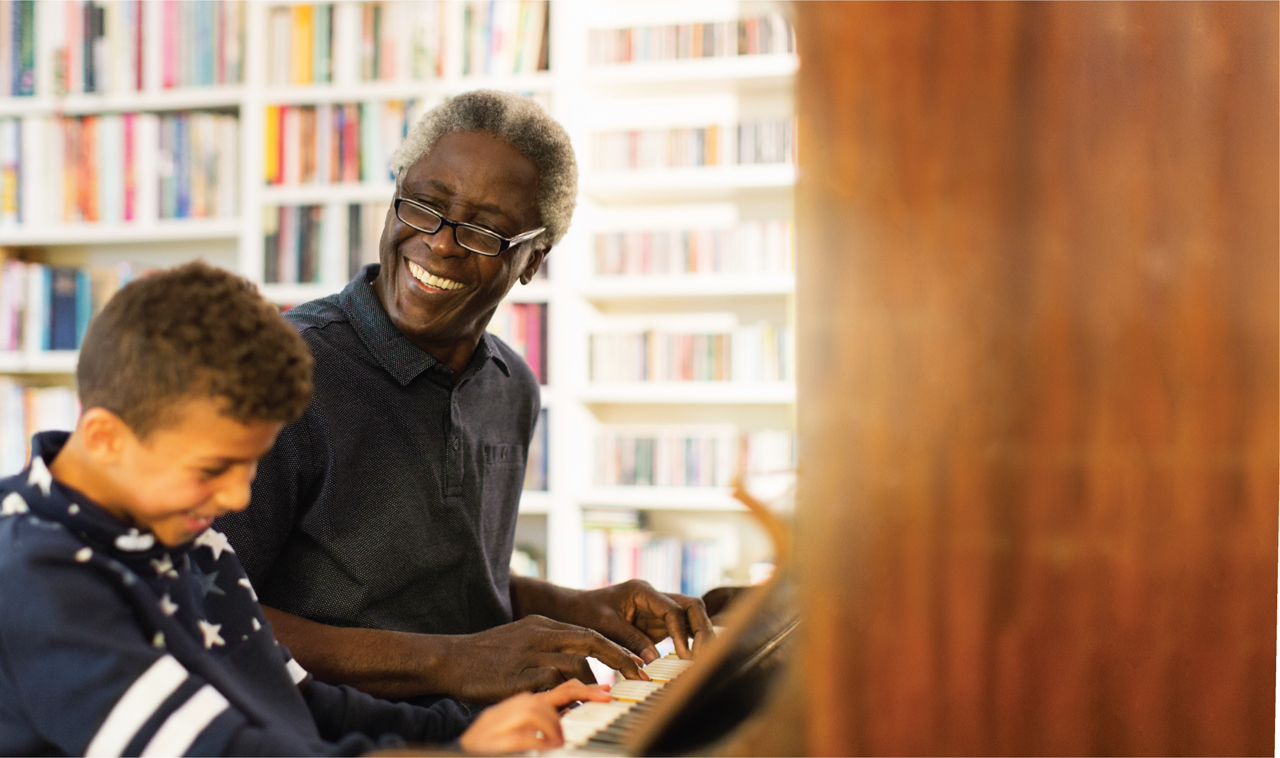
Emotional Intelligence
If I had been taught this way, I could have saved myself 30 years of studying and countless sleepless nights.
Our emotional intelligence surpasses what schools teach us. Our ability to feel and intelligently respond to those feelings is the gateway to unlocking our true potential.
Sadly, society doesn’t often function this way, leading to clashes with conventional thinking and behavior.
Efficient Learning for Musical Bliss
Implementing this approach has significantly accelerated my memorization process, enabling extended playing sessions without strain and yielding profound satisfaction.
This method of performance and practice has altered my desires, aligning them with existence itself rather than mundane needs. It’s akin to meditation, a transformative experience where music becomes a means to share emotions with others—a magical connection we all deserve.
My guitar courses introduce you to this paradigm, cultivating an immersive musical journey. Adaptation to this non-visual learning style demands patience and discipline, promising unparalleled rewards.
If you think music is only ten seconds of speed on TikTok, my courses aren’t suitable for you.
These guitar courses won’t emphasize showmanship. Instead, they foster a connection to music fueled by love and reverence for your emotions. It’s the route to authentically savoring life through music.
Focusing solely on showmanship, speed, and technique leads to inevitable dissatisfaction.
Summary of Music Mindfulness
- Connecting Through Music: Music acts as a language to connect with the essence of existence, fostering present-moment awareness and pure joy in creating, performing, and listening.
- Attaining Guitar Mindfulness: Shifting away from overthinking and cognitive conscious thinking is crucial for performers. Overthinking can hinder musical expression, leading to anxiety and depression. Prioritizing playing the imagined sound over anxious anticipation is key.
- Sound Imagination’s Role: Focusing on sound imagination rather than mere thought guides musical expression. Imagining the sound first, then translating it through thought onto the instrument, leads to more fulfilling and authentic musical experiences.
- Revolutionizing European Music Training: Traditional European music training, based on a 19th-century French model, often focuses on visual symbols rather than sound comprehension. Developing aural understanding is crucial, especially for those without early musical exposure.
- Unleashing Guitar Mindfulness: Aural learning emphasizes singing sounds with rhythm before playing, empowering peak performance and compositional skills. Connecting sound to emotions intensifies the drive for musical perfection.
- Music and Emotional Intelligence: Embracing emotional intelligence in music education saves time and empowers potential. Our innate emotional depth surpasses conventional teachings.
- Choosing Music Mindfulness: Guitar mastery is not about mere showmanship or speed. Embracing music through emotion brings true fulfillment and enjoyment.
- Warning Against Dissatisfaction: Relying solely on showmanship, speed, and technique can lead to dissatisfaction, emphasizing the importance of emotional connection in music.
